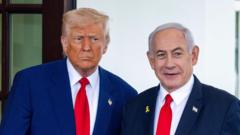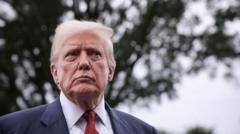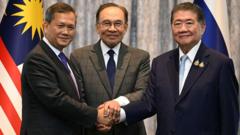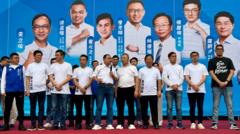**Chip manufacturers Nvidia and AMD have reached an agreement to pay 15% of their revenues from sales in China to the US government, facilitating their participation in the Chinese market while navigating trade regulations.**
**Nvidia and AMD Set to Contribute 15% of China Revenues to US Government**

**Nvidia and AMD Set to Contribute 15% of China Revenues to US Government**
**New Deal Enables Semiconductor Giants to Access Chinese Markets Amid Easing Trade Tensions**
In a groundbreaking move, semiconductor giants Nvidia and AMD will pay 15% of their revenues generated from sales in China to the U.S. government. According to insider sources speaking with the BBC, this agreement is essential for securing necessary export licenses to operate in the world's second-largest economy.
Nvidia communicated its compliance with U.S. regulations, stating, "We follow rules the US government sets for our participation in worldwide markets." Despite halting shipments of their tailored H20 chips to China for the past few months, Nvidia expressed hope that revised export controls would enable continued competitive access to both the Chinese and international markets.
Under this new structure, Nvidia will contribute 15% of its earnings from H20 chip sales within China, while AMD will align with the same percentage regarding its MI308 chipset. These decisions come in the wake of heightened security concerns that previously led Washington to prohibit sales of Nvidia's H20 chips to Beijing—a decision that was recently reversed.
The H20 chip, originally developed for the Chinese market, faced a sales freeze due to U.S. export restrictions enacted by the Biden administration in 2023 and reinforced by earlier bans from the Trump administration. Citing the intricate relationship between trade tensions and chip technologies, Nvidia's CEO Jensen Huang has actively lobbied for the resumption of sales and reportedly met with President Donald Trump last week to discuss these matters.
As relations between China and the United States appear to thaw, Beijing has liberalized its regulations concerning rare earth exports, while Washington has lifted constraints on technological design programs for firms targeting the Chinese market. The two countries previously brokered a 90-day truce in their ongoing tariff conflict, with key trade representatives conducting several high-level meetings. Nevertheless, the status of this tariff pause remains uncertain as the August 12 deadline approaches.
Nvidia communicated its compliance with U.S. regulations, stating, "We follow rules the US government sets for our participation in worldwide markets." Despite halting shipments of their tailored H20 chips to China for the past few months, Nvidia expressed hope that revised export controls would enable continued competitive access to both the Chinese and international markets.
Under this new structure, Nvidia will contribute 15% of its earnings from H20 chip sales within China, while AMD will align with the same percentage regarding its MI308 chipset. These decisions come in the wake of heightened security concerns that previously led Washington to prohibit sales of Nvidia's H20 chips to Beijing—a decision that was recently reversed.
The H20 chip, originally developed for the Chinese market, faced a sales freeze due to U.S. export restrictions enacted by the Biden administration in 2023 and reinforced by earlier bans from the Trump administration. Citing the intricate relationship between trade tensions and chip technologies, Nvidia's CEO Jensen Huang has actively lobbied for the resumption of sales and reportedly met with President Donald Trump last week to discuss these matters.
As relations between China and the United States appear to thaw, Beijing has liberalized its regulations concerning rare earth exports, while Washington has lifted constraints on technological design programs for firms targeting the Chinese market. The two countries previously brokered a 90-day truce in their ongoing tariff conflict, with key trade representatives conducting several high-level meetings. Nevertheless, the status of this tariff pause remains uncertain as the August 12 deadline approaches.



















